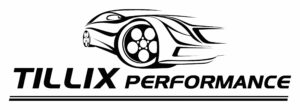The cooler air is, the more oxygen content is available in a given amount of it.
The more pressure the air is under, the more oxygen content is available in a given amount of it.
So it is easy to see, there are two effective ways of increasing our engines supply of fresh oxygen (Things such as exhaust flow, intake manifold flow and so on. Do play a big part in it also, but to keep it simple we will talk only about pressure and temp in this section)
Compress the air further through more boost OR Cool the air down more with an intercooler.
More boost will generally give the highest level of oxygen available in an engine. The drawback to it is more boost means higher cylinder pressure.
And without an effective way of measuring actual cylinder pressure after the boost has been added and compressed further by the piston, we have no way of knowing how close it is to the maximum safe working pressure each engine was designed for!
Diesel engines are built very strong. It is hard to kill one with boost alone, but the main thing that is effected is head gasket sealing.
The turbocharger is also placed under a lot more stress, again what is its maximum working level?
The only way of knowing is through mathematical calculations. But even once you have this data, try and ask the manufacturer what its max working level is? You wont get an answer.
Intercooling then becomes a much safer option for all the components involved.
1) The turbocharger inst working any harder.
2) The engine inst under any more strain (actually less).
3) The cooling system inst having to deal with the increased temp’s.
The best advice I can give to people, is to be modest when playing around with boost levels.
Somewhere around 10-20% increase would be an acceptable level depending on how much boost the car runs standard.
Talking standard setups here to. Not aftermarket turbo’s etc…
If it is 10 psi, you would look at an increase of about 3-4 psi (applicable with older indirect engines and non VNT turbo’s).
If it is 25 psi, you would look at an increase of maybe 1-3 psi (newer Direct Injection or Common Rail Diesel engines with Variable vane turbochargers)
No turbocharger is built for OEM cars with a 30-50+% overhead in safety margin. Lifting it to these kind of levels will result in turbo failure well before normal running conditions would kill it.
As the boost is increased, the temperature of the air coming out of it increases also.
Think bicycle pump and how hot it gets after pumping a Tyre up.
The average charge air temp of newer common rail diesel engines running around 20 psi is 160-170 degrees Celsius.
Most standard intercoolers will knock 100 degrees off this, which is considerable.
What we really want though, is to get that air as close as possible to ambient temperature.
Dropping the air from 70 degrees down to 30 degrees will give us nearly equivalent oxygen to another 1 psi of boost in the cylinder.
Turbocharger Upgrades
The next natural step after a good intercooler is in place will be a turbocharger upgrade.
With an aftermarket turbocharger, you will have the ability to run significantly higher boost if it is built to a high standard.
As aftermarket suppliers are not bound by stringent costs and emission standards, they can provide a product that will survive at double or triple the amount of boost that the standard turbocharger would fail at.
Provided a good amount of R&D has gone into the product, it will be well matched to the engine as to not adversely effect response and low down torque while giving more efficient compression of the air (lower air temperature) and less exhaust back pressure through a more efficient turbine.
Making each aspect of the turbocharger just a little bit better than it was totals a vast improvement over the factory item in most circumstances.

